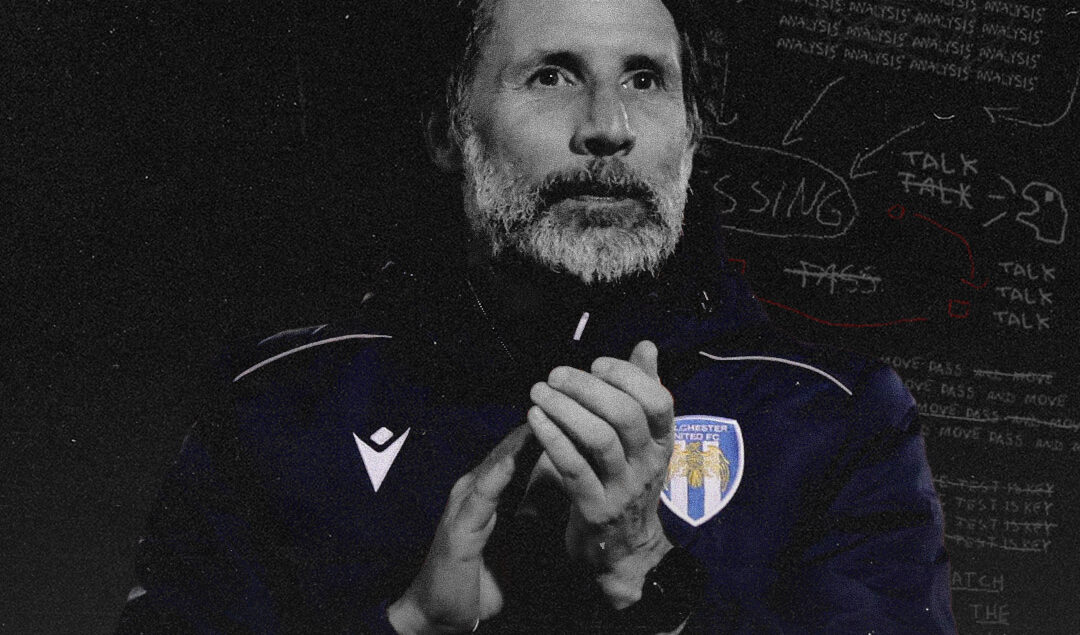Analyzing Danny Cowley’s Colchester United
After a season that seen them win 16 matches, draw 18, and lose 11, Colchester United find themselves with a slim chance of reaching the League Two promotion playoffs. One of those wins came on March 15 in a 3-0 victory against Fleetwood Town, with goals from Lyle Taylor, Owura Edwards and Jack Payne giving them the victory.
Colchester United typically line up in a 4-2-3-1 formation. This includes a back four (two center-backs and two fullbacks), a double pivot in midfield with one defensive and one holding midfielder, an advanced playmaker (CAM), two wingers, and a central striker. This base shape allows them flexibility in both buildup and defensive phases, with clear positional roles for each player.
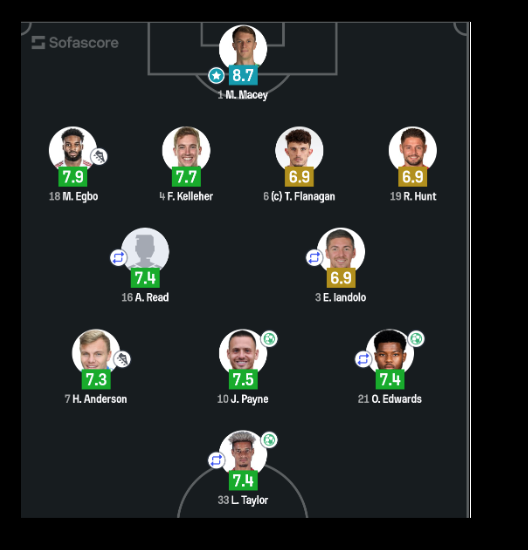
Photo: Sofascore
Build-Up Play:
In the initial phases of possession, Colchester form a 4-2 structure with the two center-backs staying wide at the edge of the box and the double pivot dropping deep to offer outlets. Their intention is to attract pressure and find spaces wide or centrally.
Shape: 4-2 (two CBs wide, two midfielders deep)
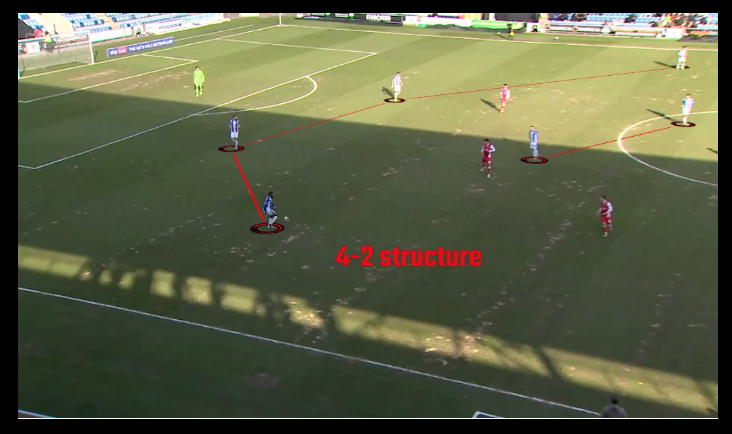
Ball Progression:
The ball is often circulated toward right-back Egbo, who drives forward and finds Taylor with diagonal passes. Taylor drops deep to pull center-backs with him and plays runners in behind, particularly Anderson. Left center-back Lándolo is key in breaking lines, although he struggles due to a lack of depth on the left, where Payne drifts away. Reid occasionally drops between CBs to create a temporary back three for better progression.
Direct Option:
When under pressure or looking to go long, the goalkeeper targets Taylor in aerial duels. Payne stays close for knockdowns, while wingers narrow their positions for flick-ons and third-man combinations—often aiming for Anderson’s diagonal runs. The two midfielders hold deeper positions to recover second balls.
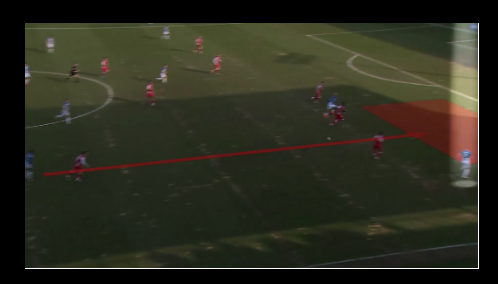
Egbo finding Anderson
Key Build-Up Players:
Taylor: Drops off to link play and create space behind.
Payne: Finds pockets, especially on the right, and makes late third-man runs.
Lándolo: Keeps excellent body orientation to play progressive passes.
Egbo: Acts as a ball carrier from deep right.
Attacking Structure and Final Third Play:
When settled in the opponent’s half, Colchester adopt a 3-2-3-2 attacking shape.
Structure:
Left-back Hunt stays deeper to make a back three.
Central midfielders (Reid and Read) form a protective double pivot.
The three attacking midfielders (Edwards, Payne, and Anderson) support the two strikers, with Taylor often joining the front line.
Patterns and Movements:
On the left, Edwards is their most effective ball carrier, driving into the box or cutting inside to shoot.
On the right, Taylor combines well with Egbo and Anderson to progress the ball with one-touch passes.
Anderson stays wide or drops between fullback and center-back to attack space.
Payne often arrives late at the edge of the box for finishes or to recycle possession.
Finishing and Final Actions:
Most chances are created through crosses from the left.
Taylor attacks the near post, Anderson occupies the far post, and Payne arrives late centrally.
Egbo and Reid position outside the box to pounce on clearances.
High Block Defending:
Structure: 4-4-2 shape with Payne and Taylor forming the first line.
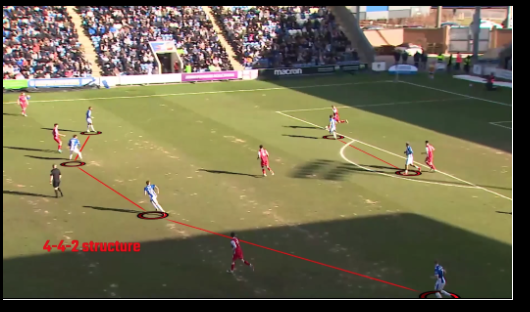
Approach: Passive pressing – they allow horizontal passes but try to prevent pivots from turning and playing forward.
Triggers: Press only when there’s a heavy touch or misplaced pass.
Wing Play Management:
Wingers cover shadows to guide the ball wide.
Once the ball reaches wide areas, they compress space and either press or force a back pass.
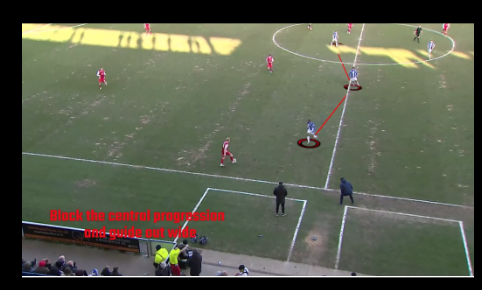
Line Height: Defenders hold a line just below halfway; the goalkeeper stays conservative inside the box.
Low Block Defending:
Structure: 4-4-1-1 with Taylor staying high for counter-attacks and Payne supporting the midfield.
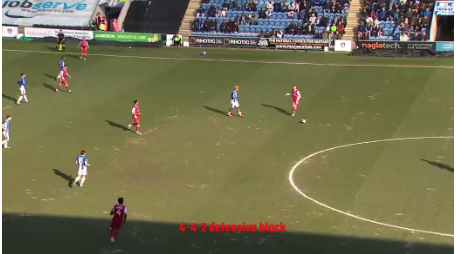
Compactness: They stay narrow and shift laterally based on the ball’s location.
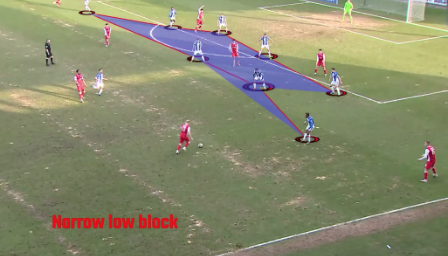
Marking:
Mixed marking system.
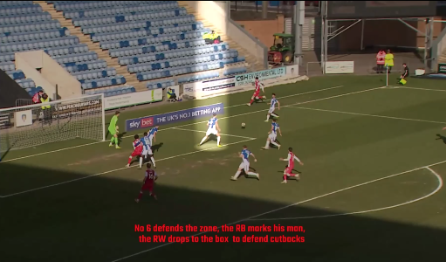
In crossing scenarios, fullbacks press the crosser, wingers help create 2v2s, and center-backs manage zones and men. The opposite fullback covers the far post but is vulnerable to blindside runs.
Aerial Defense: Center-backs are dominant in aerial duels. Midfielders and fullbacks contribute well to far-post defending.
Attacking Transition:
Behaviour: Taylor is the out-ball, holding up play or laying off to advancing midfielders.
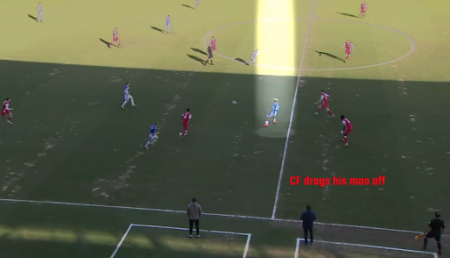
Execution: Payne and Anderson sprint into spaces, and wingers push high. Edwards, especially, carries the ball on counters with skill and pace.
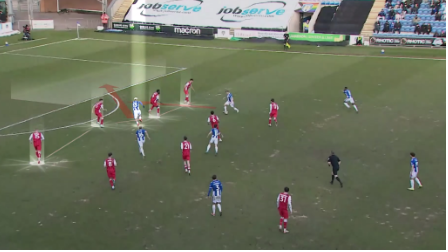
Support: Fullbacks usually stay deeper, but Egbo may join if there’s space.
Defensive Transition:
Counter-Pressing: The two central midfielders immediately try to slow the opponent down.
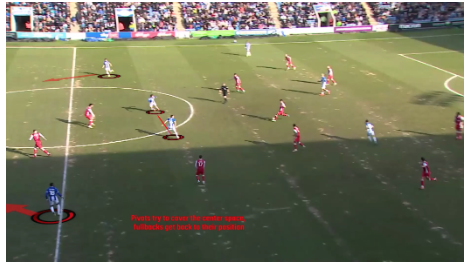
Rest Defense: The team isn’t fully structured to counter-press; instead, they drop quickly into shape.
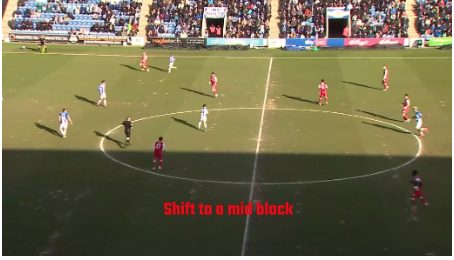
Recovery: Wingers and Payne recover centrally first, then expand wide as the ball shifts.
Conclusion
Colchester United, while not always dominant in possession, show a commendable level of tactical organization and intent across all phases of play. Their structured 4-2-3-1 system provides a strong base to build from, and their fluid transitions between buildup and attack demonstrate a clear understanding of space, movement, and roles. The use of Taylor as a central linking figure, combined with the intelligent runs of Anderson and the ball-carrying ability of Edwards, adds dynamism to their attacking threats.
In defense, their discipline in both high and low blocks reflects a team well-drilled in its responsibilities—able to adapt between passive pressing and compact blocking depending on the game state. While there are areas for refinement, particularly in their execution of attacking transitions and defending blindside movements, Colchester’s style is brave, intelligent, and evolving. Their tactical identity is becoming increasingly clear: a blend of structured buildup, sharp vertical play, and committed team defending. It’s a system that, when executed well, poses real challenges for any opposition.
By: Shawal Hossain / @itadorinotyuji
Featured Image: @GabFoligno / Rhianna Chadwick – PA Images
